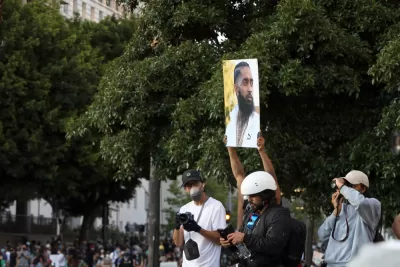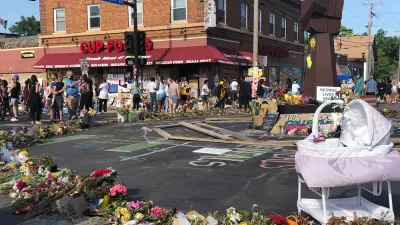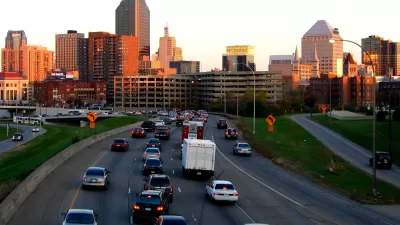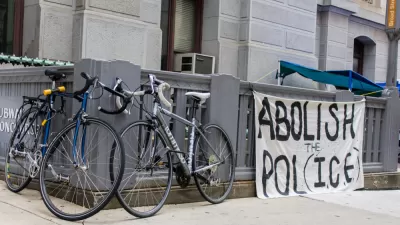Compared to 1992 in Los Angeles, the protest and civil unrest of 2020 have relocated to neighborhoods farther north, and further entrenched by white wealth.

Angel Jennings writes:
The violence that occurred after a jury acquitted four white officers in the beating of black motorist Rodney King took decades for South L.A. to recover from, and some say the area has never fully healed. Vacant lots still dot the landscape, a painful reminder.
But this time around, South L.A. has largely been spared, as protests have erupted across the city to condemn the killing by Minneapolis police of George Floyd.
Instead of South L.A. protesters in the Los Angeles area have taken to the streets in Beverly Hills, Santa Monica, and the Fairfax District, for example. According to organizers cited in the article, the geography of the protests reflects deliberate choices, based on lessons learned from 1992.
Melina Abdullah, one of the leaders of Black Lives Matter, is paraphrased to say that the choice reflects a desire to send a message, not cause violence or destruction.
The trend grew out of a crucial decision by Black Lives Matters organizers in the protests of 2013, after George Zimmerman killed Trayvon Martin under protection of the state's stand your ground law.
For additional, recommended reading, see an article for The New York Times by Emily Badger that expands the scope fo the discussion about the geography of protest to the 1960s and a much larger set of urban areas in the United States.
FULL STORY: South L.A. is largely untouched by unrest. That is by design

Planetizen Federal Action Tracker
A weekly monitor of how Trump’s orders and actions are impacting planners and planning in America.

Congressman Proposes Bill to Rename DC Metro “Trump Train”
The Make Autorail Great Again Act would withhold federal funding to the system until the Washington Metropolitan Area Transit Authority (WMATA), rebrands as the Washington Metropolitan Authority for Greater Access (WMAGA).

The Simple Legislative Tool Transforming Vacant Downtowns
In California, Michigan and Georgia, an easy win is bringing dollars — and delight — back to city centers.

The States Losing Rural Delivery Rooms at an Alarming Pace
In some states, as few as 9% of rural hospitals still deliver babies. As a result, rising pre-term births, no adequate pre-term care and "harrowing" close calls are a growing reality.

The Small South Asian Republic Going all in on EVs
Thanks to one simple policy change less than five years ago, 65% of new cars in this Himalayan country are now electric.

DC Backpedals on Bike Lane Protection, Swaps Barriers for Paint
Citing aesthetic concerns, the city is removing the concrete barriers and flexposts that once separated Arizona Avenue cyclists from motor vehicles.
Urban Design for Planners 1: Software Tools
This six-course series explores essential urban design concepts using open source software and equips planners with the tools they need to participate fully in the urban design process.
Planning for Universal Design
Learn the tools for implementing Universal Design in planning regulations.
Smith Gee Studio
City of Charlotte
City of Camden Redevelopment Agency
City of Astoria
Transportation Research & Education Center (TREC) at Portland State University
US High Speed Rail Association
City of Camden Redevelopment Agency
Municipality of Princeton (NJ)





























